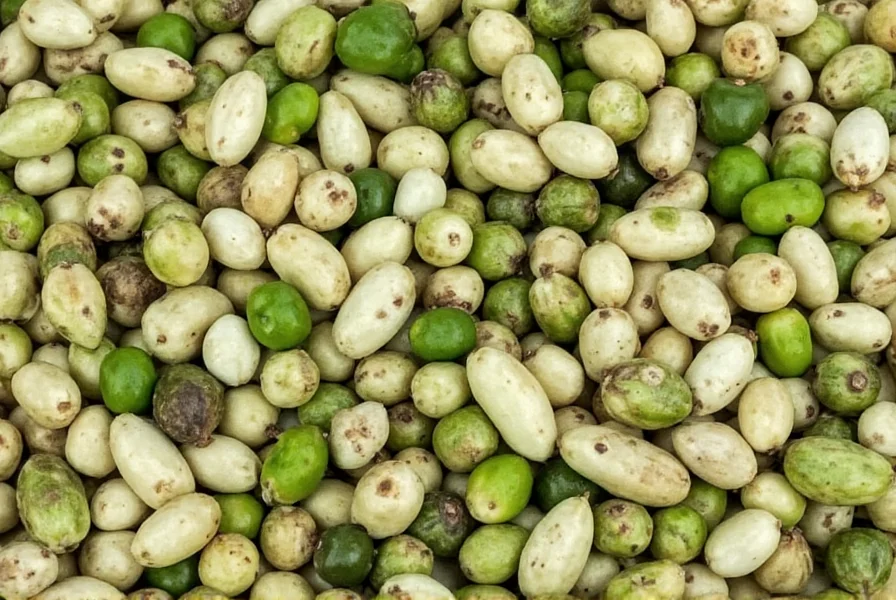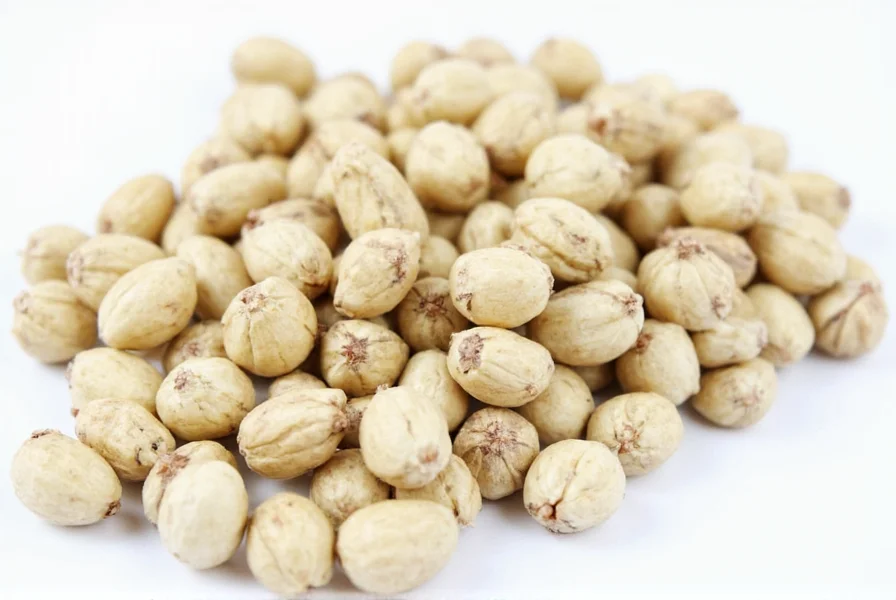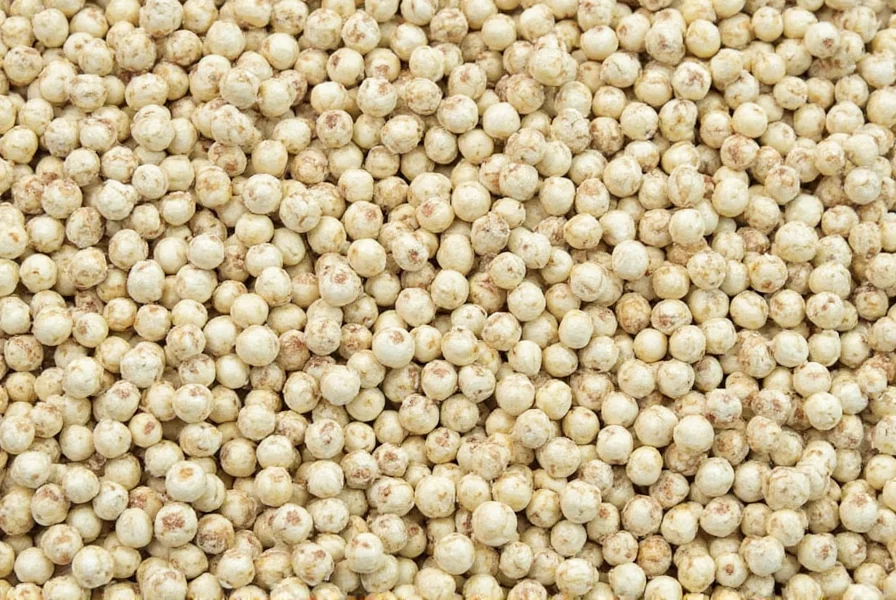Table of Contents
Introduction to White Pepper
What kind of pepper is white pepper? It's a spice made from the seeds of the Piper nigrum plant, processed by removing the outer fruit layer (pericarp) before drying. Unlike black pepper, which uses unripe green berries, white pepper comes from fully ripe red berries that are soaked to remove the outer skin, resulting in a milder, earthier flavor profile. This unique processing method makes white pepper a distinct ingredient in culinary applications, often preferred for its subtle taste and appearance in light-colored dishes.
While often overshadowed by black pepper, white pepper has been used for centuries in various cuisines worldwide. In this article, we'll explore what white pepper is, how it differs from black pepper, its flavor profile, culinary uses, and practical tips for selecting and using the best quality white pepper.
What Is White Pepper?
White pepper originates from the same plant as black pepper (Piper nigrum), but its production process differs significantly. The berries are harvested when fully ripe and red, then soaked in water for 7-10 days to ferment and soften the outer skin. After soaking, the skin is mechanically removed, leaving only the white seed inside. This seed is then dried, resulting in the smooth, pale grains known as white pepper.

This processing method removes the piperine-rich outer layer that gives black pepper its sharp heat, resulting in white pepper's characteristic milder, more earthy flavor with subtle floral notes. The absence of the outer skin also prevents dark specks in light-colored dishes like cream sauces or mashed potatoes.
White vs. Black Pepper: What's the Difference?
| Feature | Black Pepper | White Pepper |
|---|---|---|
| Origin | Unripe green berries | Ripe red berries |
| Processing | Dried in the sun with skin intact | Soaked to remove skin before drying |
| Color | Dark brown to black | Light beige to white |
| Flavor | Pungent, sharp, and complex | Milder, earthier, and more subtle |
| Use | General seasoning, meats, sauces | Delicate dishes, creamy sauces, soups |

The key difference lies in the processing method. Black pepper's skin retains piperine compounds that create its signature heat, while white pepper's skin removal reduces this intensity. This makes white pepper ideal for dishes where visual appeal matters, as it won't leave dark specks in light-colored foods.
Flavor Profile and Culinary Uses
White pepper's flavor profile is characterized by its smooth, rounded taste with earthy and sometimes floral notes. It lacks the sharp, biting heat of black pepper but offers a more refined spiciness that complements delicate ingredients without overpowering them.
Professional chefs commonly use white pepper in:
- Creamy sauces: Perfect for Alfredo, béchamel, or cheese sauces where black pepper specks would be visible
- Light-colored soups and broths: Enhances flavor without altering appearance
- Seafood dishes: Complements delicate fish and shellfish flavors
- Poultry preparations: Adds subtle heat to chicken and turkey recipes
- Mashed potatoes and white sauces: Provides seasoning without visible specks

For optimal flavor, use white pepper in dishes where its subtle characteristics can shine. It's particularly valuable in French and Chinese cuisines where appearance and refined taste are prioritized.
Buying Guide: How to Choose the Best White Pepper
When selecting white pepper, consider these quality indicators:
Key Features to Look For
- Appearance: Uniform size and color with no dark specks or impurities
- Smell: Warm, aromatic scent without mustiness or sour notes
- Texture: Dry, crisp grains that feel lightweight
- Source: Look for peppers from reputable growing regions like India, Vietnam, or Brazil
Recommended Products
- Malabar White Pepper (Ground)
- Origin: Kerala, India
- Characteristics: Clean, bright flavor with balanced earthiness
- Best For: Everyday cooking, sauces, and soups
- Storage: Keep in airtight container away from light and moisture
- Jamaican White Pepper (Whole)
- Origin: Jamaica
- Characteristics: Robust flavor with subtle floral notes
- Best For: Gourmet dishes and spice blends
- Storage: Whole peppercorns retain freshness longer than ground
- Vietnamese White Pepper (Milled)
- Origin: Vietnam
- Characteristics: Balanced flavor with moderate heat
- Best For: Quick meal preparation and everyday use
- Storage: Use within 6 months for peak freshness

For best results, purchase whole peppercorns and grind them fresh. Ground white pepper loses potency faster than whole peppercorns due to increased surface area exposure to air.
Practical Tips for Using White Pepper
- Grind it fresh: Use a dedicated pepper mill or mortar and pestle to release maximum flavor
- Add early in cooking: White pepper benefits from longer cooking times to develop its full flavor
- Use sparingly: Start with 1/4 teaspoon per serving and adjust to taste
- Pair with dairy: Complements cream-based dishes exceptionally well
- Avoid high-heat frying: Can become bitter when exposed to very high temperatures

White pepper is not a direct substitute for black pepper but rather a complementary spice. Its subtle nature makes it ideal for dishes where the pepper should enhance rather than dominate the flavor profile.
Conclusion
White pepper is a distinct spice made from the same plant as black pepper but processed differently to remove the outer skin. This results in a milder, earthier flavor profile that's particularly valuable in light-colored dishes where appearance matters. Whether you're a professional chef or home cook, understanding white pepper's unique characteristics allows you to elevate your culinary creations with refined seasoning.
By selecting high-quality white pepper, grinding it fresh, and using it appropriately in your recipes, you can unlock new dimensions of flavor in your cooking. Its subtle complexity makes it a valuable addition to any well-stocked spice cabinet.
Frequently Asked Questions About White Pepper
What kind of pepper is white pepper actually made from?
White pepper is made from the fully ripe red berries of the Piper nigrum plant. The berries are soaked in water for 7-10 days to ferment and soften the outer skin, which is then mechanically removed before drying the inner seed. This process differs significantly from black pepper production, which uses unripe green berries dried with the skin intact.
Is white pepper just bleached black pepper?
No, white pepper is not bleached black pepper. This is a common misconception. The white color comes from the natural removal of the outer skin during processing, not chemical bleaching. Traditional white pepper production uses water soaking and fermentation to loosen the skin, followed by mechanical removal. No bleaching agents are used in authentic white pepper production.
Why do professional chefs prefer white pepper in some dishes?
Chefs choose white pepper primarily for two reasons: appearance and flavor. In light-colored dishes like cream sauces, mashed potatoes, or white soups, white pepper doesn't create visible black specks. Additionally, its milder, more earthy flavor profile complements delicate ingredients without overpowering them. In French cuisine, white pepper is traditionally used in béchamel sauce, and in Chinese cuisine, it's preferred for certain soups and stir-fries where visual purity matters.
Does white pepper have the same health benefits as black pepper?
Both white and black pepper contain piperine, which enhances nutrient absorption and has anti-inflammatory properties. However, black pepper generally has higher concentrations of certain antioxidants because it retains the outer fruit layer. According to USDA food databases, black pepper contains more flavonoids and phenolic compounds due to the intact pericarp. Both varieties support digestive health, but black pepper may offer slightly broader nutritional benefits.
Can I substitute white pepper for black pepper in recipes?
You can substitute white pepper for black pepper, but with considerations. White pepper is milder and less complex in flavor, so you may need to use 20-30% more to achieve similar seasoning levels. It works best as a substitute in light-colored dishes where black specks would be undesirable. For bold-flavored dishes like steak rubs or hearty stews, black pepper is usually preferable. When substituting, start with 3/4 the amount of white pepper and adjust to taste.
How long does white pepper stay fresh compared to black pepper?
White pepper loses potency faster than black pepper because the protective outer layer has been removed. Whole white peppercorns stay fresh for 2-3 years when stored in an airtight container away from light and moisture, while ground white pepper is best used within 6 months. Black pepper, with its intact outer layer, typically maintains flavor for 3-4 years for whole peppercorns and 1-2 years for ground. For optimal freshness, purchase whole white peppercorns and grind them just before use.











 浙公网安备
33010002000092号
浙公网安备
33010002000092号 浙B2-20120091-4
浙B2-20120091-4